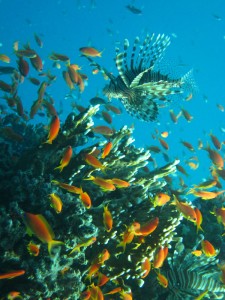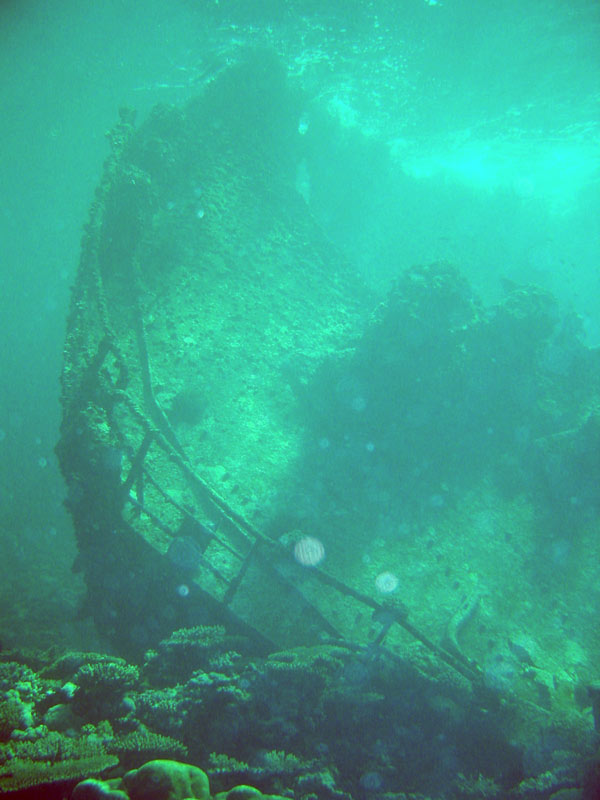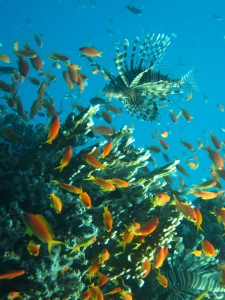
The Red Sea has long been one of the most popular diving destinations in the world. The crystal clear, warm waters make for an unparalleled experience whatever your level of skill. Whether you are a seasoned diver or a beginner, the underwater world of adventure it has to offer should not be missed.

Sharm El Sheikh – one of the most popular tourist destinations in Egypt – makes the perfect base to start your diving adventure in. Many of the most spectacular wrecks and reefs are but a short boat ride away
Some interesting facts you should know; the Red Sea – a large saltwater inlet from the Indian Ocean – is bordered by Asia and Africa and occupies a surface area of some 170,000 square miles. Debate still rages as to how the name was arrived at and there are several theories which include; a red seasonal algae bloom (Trichodesium Erythraeum), the name of the surrounding mountain ranges in Egypt and alternatively the name translating into a directional indicator (Black Sea is also thought to translate to north).
The Red Sea has been labeled as a marine eco region and conservation area by the Worldwide Wildlife Federation. The patchwork quilt of vibrant colours and weird and wonderful formations formed by the 200 different varieties of hard and soft water corals are home to some 1,200 varying species of fish, 1,000 invertebrate species and around 44 different sharks (not good news for those who have to watch the Jaw’s films from behind the sofa).
The average water temperatures in summer range from 26°C in the north and 30°C in the south. Interestingly it is also one of the most saline bodies of water in the world due to a high level of evaporation.
With over 1,200 miles of coral reef stretching around its coastline the Red Sea is a perfect diving destination for 2 reasons; firstly, the reefs and the lagoons make for the perfect environment for abundant marine life and secondly; the reefs that make life here possible are treacherous to ships navigating through and around them which has led to some truly amazing wreck sites, more often than not in depths of only 20-30 metres of crystal clear water.
Let’s take a look at the top 5 Red Sea dives off the Egyptian coast:
1: The SS Thistlegorm wreck; a military vessel built in Glasgow in 1940, sank in the area of Sh’ab Ali in the Gulf of Suez in October 1941 after suffering fatal damage from a German bomber. An awe inspiring dive site with the original cargo of armored gun carriers, jeeps, trucks, rifles and ammunition still to be seen. An explosion hole in the 120 meter hull of the wreck allows easy entry to see the cargo, schooling Barracuda and Giant Tuna that now call her home. It’s easy to see why this wreck is one of the most popular in the world but hurry as she is deteriorating fast.

2: The Giannis D wreck: a 100 metre long cargo ship built in Japan in 1969, sank in April 1983 in the Straits of Gubal after sailing off course and striking a reef. A spectacular and mostly intact wreck (resting in 3 sections on the ocean floor) with the interior spaces still accessible.
You can still enter the engine room and the accommodation quarters can be seen along with all manner of marine life that has made the wreck its home; including the rather prickly and very aptly named “Crown of Thorns Starfish”. A reef nearby has a spectacular array of corals and fish that should not be missed (many of which have also now crossed over to the wreck).
3: The SS Dunraven wreck: built in 1873 in Newcastle Upon Tyne, an 80 meter long steamship, sank in 1876 whilst carrying a cargo of spices, cotton and timber. Various stories surround the fateful night she sank but perhaps the most interesting is that she was set alight during an alleged drunken row between the Captain, his wife and his first mate (draw your own conclusions here). It seems more likely that in reality the cause of the sinking was mis-navigation which was to be the reason his license was later revoked by the British Board of Trade.
The ships cave-like hull is open to exploration owing to it being excavated by archaeologists in the 1980′s. The remains of the boilers and metalwork (since collapsed) can still be seen along with the Giant Morays and Yellow Goat that now call the wreck home. You’ll find all manner of marine life outside too including the rare Ghost Pipe fish and perhaps schools of Bat fish which makes for superb photo opportunity.
4: The Carnatic wreck: built in London in 1862, a P&O passenger ship (sail and steam) 90 meters in length. She sank carrying cotton bails, wine and Royal Mint gold to the tune of £40,000 after a 36 hour battle on the Sha’ab Abu Nuhas reef. Amazingly the Captain had issued the order that the passengers and crew remain aboard being confident of rescue by a sister P&O ship on her return journey. Unfortunately no such rescue was affected and the ship broke in half as the seas became rougher and began her 24 metre descent to the ocean floor.
You would be hard pressed to find any gold (every last piece was recovered shortly afterwards during a British salvage operation) but this wreck site certainly doesn’t disappoint when it comes to a remarkably preserved example of a19th century passenger ship.
Amazingly the fore and aft sections of the ship are still accessible and have been colonized over time by Glass fish along with an indigenous reef fish population, making the “wine wreck” a dream come true for underwater photographers.
Should you fancy a tipple whilst you’re exploring the wreck, intact bottles of wine can still be seen littering the hull and ocean floor; although drinking them is probably not recommended…
5: The Ras Mohammed National Park: Finally, no diving experience could be complete without visiting the beautiful reefs within this area of protection. The reefs offer a surprisingly stark contrast to the barren desert that borders them on land, with tapestries of striking colour and marine life in abundance.
Located in the Gulf of Suez (a short boat ride from Sharm El Sheikh) the national park incorporates the spectacular vertical coral walls of the “Main Beach” along with a recently opened reef called Marsa Bareika that contains an array of superior coral specimens. Here you will find Barracudas, Snappers (along with the odd shark or two) along with a population of 20 metre long eels. The calm sheltered water makes this an easy dive for the beginner and an overall must see experience.

This is but a short selection of the most beautiful and awe-inspiring Red Sea diving hotspots. No visit to Egypt should be complete without experiencing one of the most beautiful diving destinations the world has to offer.